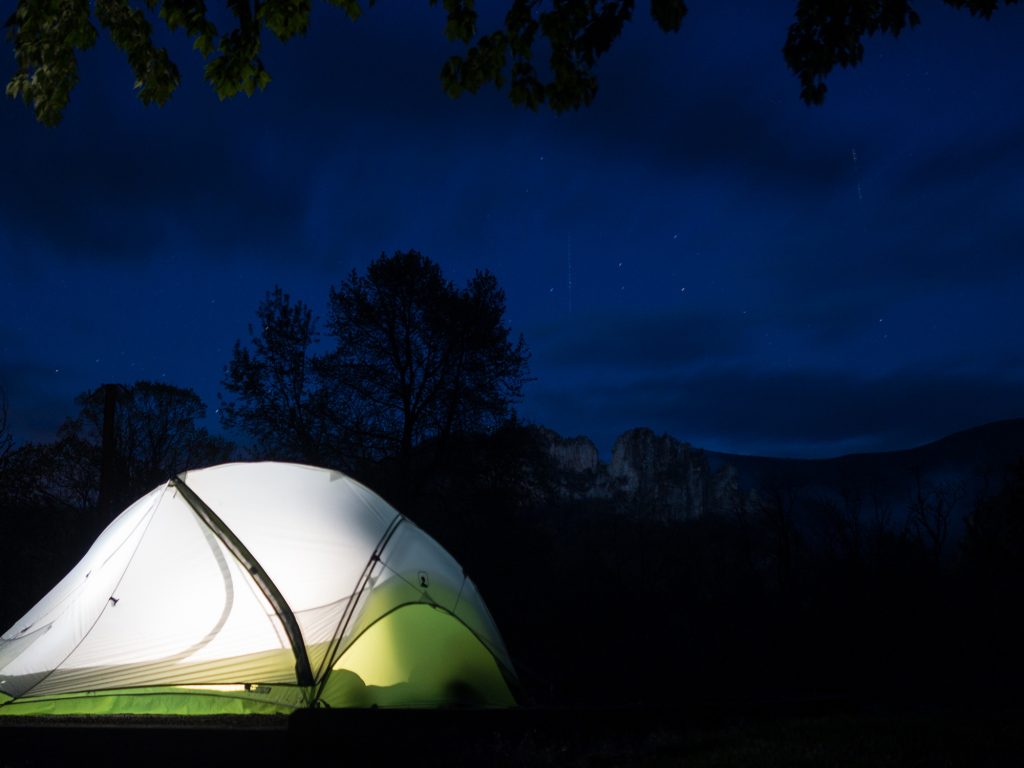Backpacking can be an incredibly rewarding experience. You get to meander through the wilderness with all you need on your back, sleep under the stars, and brew a fresh morning cup of coffee miles away from civilization. However, the same gear that allows us to recreate in the backcountry also takes a toll on us, sapping more energy and wearing on our bodies with each additional pound dropped into the pack.
Gear has diversified significantly from the days of heavy flannels, external frame rucksacks, and steel shank boots. Considering this, what options are available for doing an ultralight backpacking adventure?

The Gram-Shaving Mentality
Ultralight backpacking is all about lessening the traditional load. This task is typically accomplished in three ways: upgrading to lighter, compact gear, redesigning your meals, and embracing minimalism by cutting out relative luxuries. With these points in mind, here are some ideas to get you started:
Bare Necessities
Cutting out unnecessary pieces is the most basic way to shave weight. However, it is important to identify “luxury” items without jeopardizing safety.
For instance, quick-drying, odor-resistant fabrics such as Techwick or wool allow hikers to extend the usage of each garment and to avoid packing additional items. Doubling use, such as filling a stuff sack with a midlayer to form a comfortable pillow, additionally allows you to leave more gear at home.
Ditching the stuff sacks and instead packing shelters and poles directly into the backpack brings tents down to their “trail weight.” As well, travel-sized toothpaste, toothbrushes, and soaps save weight and space over conventional sizes. As another hack, cutting the handle off a toothbrush also works.
Creativity is an ally here. Even something as simple as removing the cardboard core of a toilet paper roll will reduce unnecessary weight.

Cooking with Weight in Mind
Mealtime is one major area that can be adapted to reduce weight. For example, calorically dense foods like peanut butter and chocolate offer more energy per ounce, eliminating the need for additional food and weight. Determining the ideal amount of a particular food you bring, however, will take tweaking, but the industry starting point is two pounds per person per day.
Further keep in mind that water weighs 1 kg/liter, or roughly 2.2 pounds/liter. When hiking in areas with ample water sources, cooking water-intense meals, like pasta, is a non-issue. However, on trails where water is scarce and must be carried long distances, opting for meals that do not require boiling or that use water more efficiently enables you to bring along less water weight. Also, meals involving long boil times or simmering increase fuel demands, requiring more canisters or liquid fuel regardless of water availability.
As another tip, taking a few minutes before a trip to repackage items can save space and eliminate waste-related weight. Rice, pasta, mashed potatoes, couscous, oatmeal, and similar items can all be stored in Ziploc bags, for example.

Ideal Gear
By far the most exciting part of preparing for an ultralight backpacking experience is scoping out lighter gear. The options are nearly limitless, but some key weight-saving pieces are sleeping bags, sleeping pads, tents, and clothes. Backpacks also vary significantly by weight, but a proper fit is a higher priority.
Sleeping Bags
High-quality down or synthetic sleeping bags offer more warmth-per-ounce when compared to heavier, bulkier, less-efficient insulation. Bags like the Sea to Summit Spark SPII weigh nearly one pound and make for a strong late-spring, summer, and early-fall choice.
Sleeping Pads
Inflatable pads, such as the Therm-A-Rest NeoAir or Sea to Summit UltraLight, offer durable comfort and warmth while weighing at least a pound less than conventional self-inflating models.
Tents
Backpacking tents are constructed with lighter materials and more compact designs. With all things being equal, a freestanding tent (one that does not require staking) will be slightly heavier than a non-freestanding design. However, certain models, like the EMS Velocity 2, offer the convenience and versatility of a freestanding tent while keeping overall weight to a minimum.
Clothing
Wool and synthetic layers are dynamic, mitigate odor, dry quickly, and withstand abrasion well. To name a few, Techwick, Icebreaker, and Smartwool are all fantastic options. As well, extending the practical usage of individual shirts, pants, socks, and undergarments enables backpackers to bring fewer items without jeopardizing safety or comfort.
Joseph Lasky
Originally hailing from New Jersey, Joe’s adoration for the outdoors was born during time spent in the badlands of North Dakota. The cold, windy, and desolate clay landscape set backcountry passions ablaze. Once ignited, wanderlust brought him to wild areas throughout the states before settling down in Alaska for several years. After backpacking and kayaking in the rugged north country, Joe bid farewell to his neighborhood bears and moose, drove back East, and calls the Philadelphia area home. He now dabbles in bicycle commuting, though kayak touring, backpacking, and trail running are his perennial favorites.




